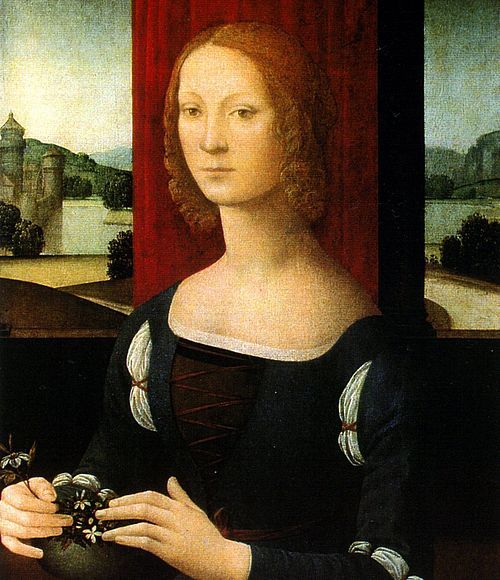
This blog on the life and times of Caterina Sforza is part one of many. In this particular one, we're going to be examining the three most important people in her early life. We can see traces of their personalities, their footprints, in Caterina's life and personality. Obviously, Caterina was her own person and made her own choices in life, but these three figures were the figures she modeled her behavior on.
This is the laying of the bricks of background, to indulge in a little alliteration. To help understand who Caterina Sforza became, who taught her hard lessons in early childhood, who she would reference in times of trouble.
So we'll go through in order of their deaths.
To get to know someone, the saying doesn't go, but should, get to know their maternal grandmother.
Meet Bianca Maria Visconti, Caterina's grandmother. Last of the Visconti clan of Milan through her father's line.
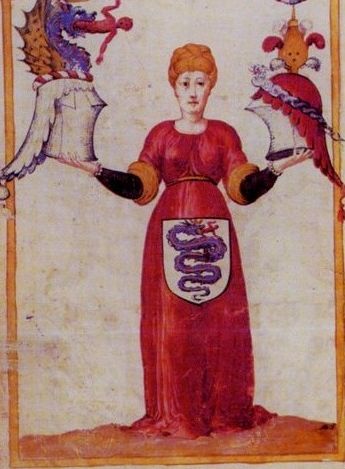
Bianca Maria Visconti married Francesco Sforza when she was sixteen and he was about forty. Together, the pair campaigned in Naples trying to carve out a pocket kingdom for themselves. When that failed, and her father, the last ruler of Milan died, Bianca Maria and her husband entered into a complicated three player geopolitical game. Look below to get a sense of it:
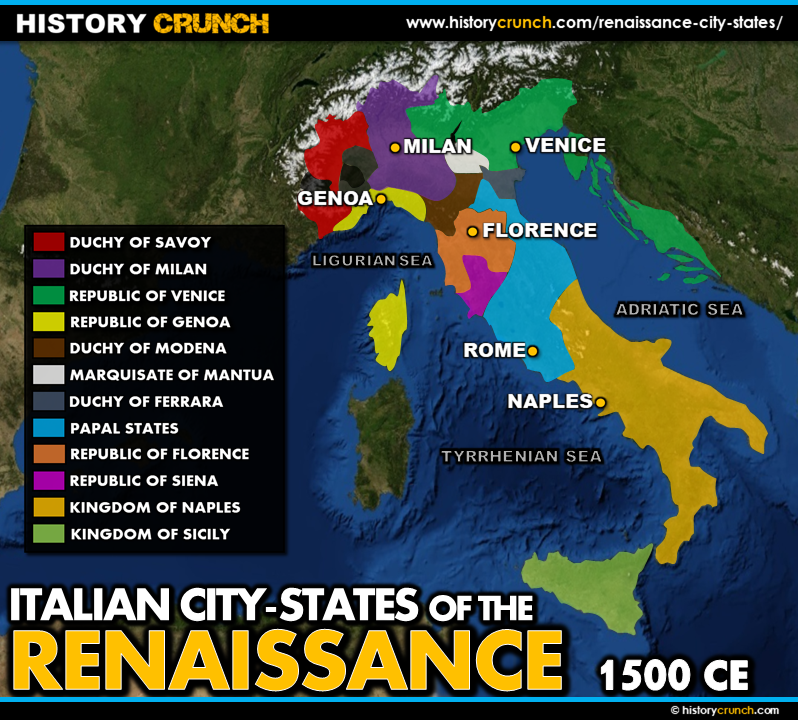
Bianca Maria Visconti and her husband Francesco Sforza contested the formation of the Ambrosian Republic, which would undo the monarchy it had previously been under under the Visconti. Venice, Milan's most powerful neighbor, also saw this as an ideal situation to gain some territories. The three powers--Ambrosian Republic, the Sforzas and Venice played a three-game long game of speed chess against each other which ended with Venice switching it's support to the Sforza's, who reclaimed Milan and dismantled the Ambrosian Republic. Bianca Maria Visconti was key to Sforza's claims of legitimacy, and aided him in winning over the people of Milan to the Sforza hegemony.
They were a very busy couple. She had eight children with Francesco Sforza: Galeazzo (future duke of Milan and father of Caterina Sforza), Ippolita, Filippo, Sforza (yes, his name was Sforza Maria Sforza, stop giggling), Francesco Galeazzo, Elisabetta, Ottaviano, Ascanio (a Cardinal and influence peddler in the papal courts of Rodrigo Borgia and Giuliano Della Rovere) and Ludovico.
Take a look below:
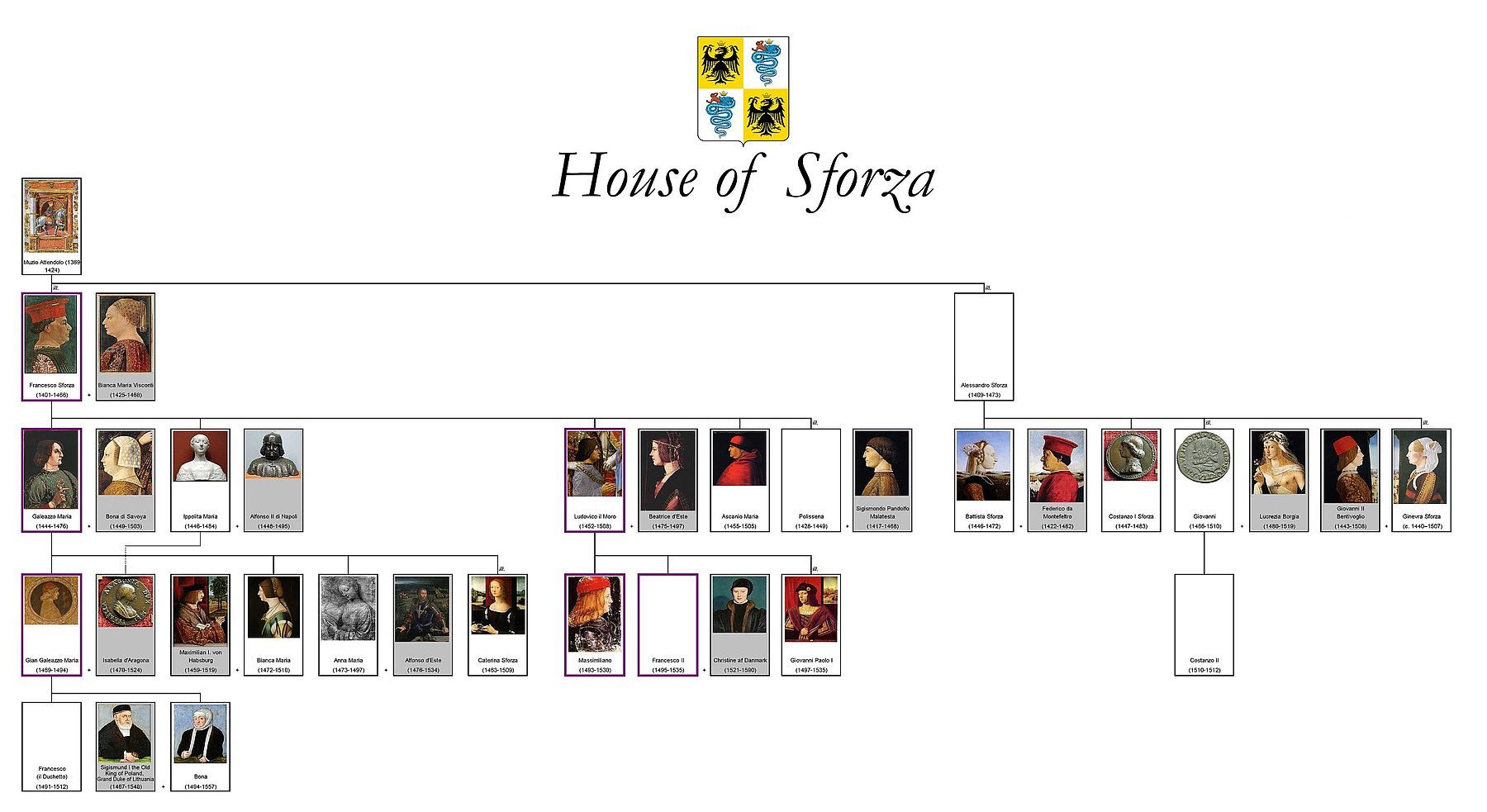
In Bianca Maria Visconti/Sforza, we can see a genuine concern for others. Not just her peers, but in furthering the lot of the common people. She spent lavishly, and much of it on public works. I don't mean to paint her as a starry-eyed reformer because she wasn't. But she would, according to Morley's The Story of the Sforzas, walk to mass barefoot, a sign of piety that made her well respected and liked by the common people of Milan. When she wasn't in one of her rages, Bianca Maria was a people person, and took the revolutionary attitude that funds were for spending (see above public works) rather than hoarding.
Not to imply that dear Bianca Maria would be on anyone’s short list for purely good people. She had a temper that can only be described as a wolverine on mescaline after three days without sleep. It was a trait in the Viscontis, and the Sforzas as well.
Bianca Maria Visconti was never still, never ceasing. But even in her busy life of marriage, raising potentates, leading sieges, having people murdered, murdering people herself and spending money like it was going out of style, she had some downtime. Bianca Maria had a few years of comfort with her granddaughter, Caterina Sforza while she helped her son Galeazzo Maria rule Milan.
Little Caterina Sforza would grow up to be one of the more talked about women and soldiers of the Renaissance. She had that wonderful and terrible Sforza/Visconti temper and I don’t doubt that gam-gam Bianca Maria Visconti would tell Caterina over and over that story where she threw a spear through a man’s mouth at the battle of Cremona in 1448 from horseback, or that one time when she ordered a day-and-night bombardment of a castle in Naples just when it looked like her husband was about to give up on account of rain. Just so the four-year old would know what was what. Some people’s grandmothers tell fairy stories, but I imagine Bianca Maria Visconti told war stories to the end.
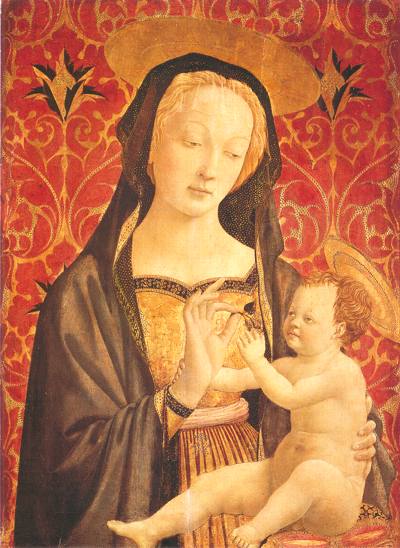
Unfortunately for Bianca Maria Visconti, Galeazzo Maria Sforza didn't like sharing power, even with his own mother. He took the throne at age twenty-two, and in a few short years exiled his mother to Cremona, the town where she'd married Francesco. She died en-route in 1468--when Caterina was five years old.
There were the usual accusations of poisoning leveled at Galeazzo Maria, but Milanese historian Bernadino Cori wrote that Bianca Maria died "died of natural ungratefulness more than poison."
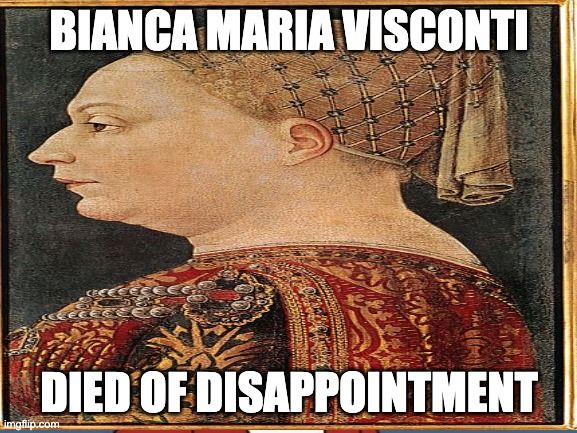
Galeazzo Maria Sforza, Caterina's father, was a great example of a Renaissance prince: not only in his virtues, but in his deficiencies.
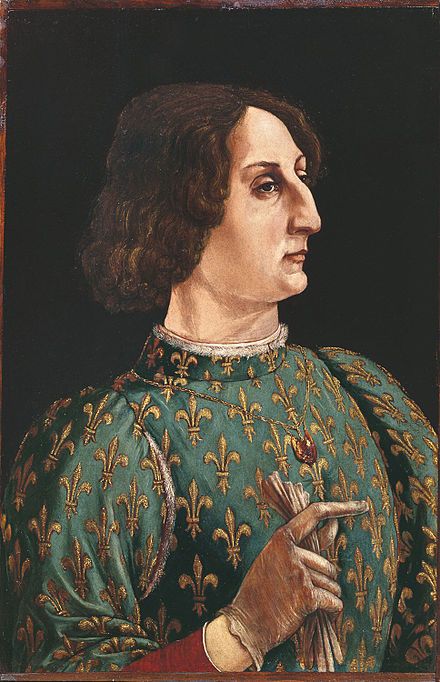
He was brilliant, charming and sophisticated from a young age. At eight he impressed a dumbstruck Frederick III of the Holy Roman Empire with a substantial recitation in Latin. An observer wrote of the event: "One might have thought he was listening to a practiced orator of thirty, and he is but eight years old!"
Even pope Pius II--the only pope to write a tell-all biography by the way, and an invaluable source on the Renaissance--had a favorable impression of Galeazzo Maria.
"This handsome youth was not yet sixteen, but his character, eloquence and ability were such that he exhibited a wisdom greater than that of a grown man...it was astounding to hear the sentiments of an old man issuing from the lips of a lad and to a beardless boy giving utterance to the ideas of a graybeard."
Galeazzo Maria gave the promise of being self-possessed and capable as a child and young man. So many do, and then they get power.
Or, perhaps more simply, Galeazzo Maria had grown up with power, and it intoxicated him. He put such a focus on glitz and glamour that he strained the Milanes coffers, not an easy thing to do. The Sforza under his rule became a byword for largesse and wasteful expenditures. Such was Galeazzo's love of power that he gave out arbitrary orders like the following:
"To the Podesta of Pavia: no one in this city may dance after one-o'clock at night on pain of his life."
This was the tip of the iceberg, as far as Galeazzo Maria's irrationality went.
Inextricably tied to his personality was a deep sense of paranoia, love of demonstrating power and exceptional cruelty. Prescott, in his book Princes of the Renaissance admits that his brand of tyranny was deeply personalized and unhinged. A few examples:
-Galeazzo Maria once came across a peasant while out hunting who had killed a rabbit. Galeazzo Maria insisted that the man eat the rabbit then and there. Skin, bones, organs, everything. The man was made to obey, and died of it.

-A priest once made a remark that Galeazzo Maria would come to a bad end if he kept up this sort of behavior. Galeazzo Maria ordered the man be given a candle, a fine meal, and then locked in a cell to starve to death. The priest lasted twelve days before expiring.
On top of all this, the second Sforza to rule Milan was a rapist who specialized in the wives of the local nobility, and liked to rub that fact in.
Caterina Sforza never stopped admiring her father, a subject to which she would return to at length through her life. In fact, according to Elizabeth Lev, Caterina's biographer, the first direct quote we have from Caterina Sforza makes explicit reference to Galeazzo Maria, when she was holding the Vatican hostage with cannons.
"So he wants a battle of wits with me does he? What he doesn't understand is that I have the brains of Duke Galeazzo and I am as brilliant as he!"
Eventually, Galeazzo Maria's luck ran out. He was assassinated by three of his advisors, who were sick of his constant trespasses. The assassins didn't long survive their victim, but one managed to breathe out the following maxim under torture: "Mors acebra, fama perpetua," [Death is sharp, but fame is eternal].
Such a saying would apply to the unfolding life of Caterina Sforza, and indeed, to the entire extended Sforza family.
Galeazzo's wife, Bona of Savoy, wrote to Pope Sixtus IV, asking according to Prescott, for a post-mortem indulgence for her husband. She was not blind to her husband's cruelties and faults, and in fact included and itemized list of sins he needed expunged in order to clear purgatory:
"[Galeazzo] was versed in warfare, both lawful and unlawful; in pillage, robbery and devastation of the country; in extortion of subjects; in negligence of justice; in injustice knowingly committed; in the imposition of new taxes which even included the clergy; in carnal vices; in notorious and scandalous simony and in various and innumerable other crimes."
Pope Sixtus IV granted Bona of Savoy's request, after being sure she could pay up, which she did.
The last figure in Caterina's life was her step-mother, Bona of Savoy.
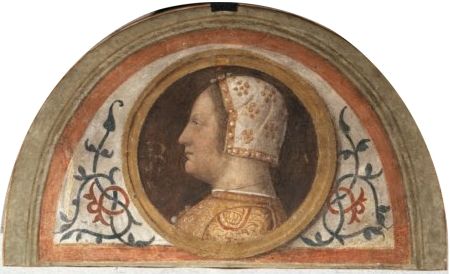
Bona of Savoy married into the Sforza family and was Galeazzo Maria's second wife. In contrast to her fractious husband, Bona seemed to get along with everyone and to think the best of them even when the worst was on full display.
Cultured, subtle and kind, Bona of Savoy ruled Milan after Galeazzo's assassination. She declared Gian Galeazzo, her young son heir after securing the castle. She and the humanist scholar Simonetta would rule as co-regents until the boy came of age. While she suspected that another Sforza may have had a hand in her husband's death, she didn't press the matter for fear of further strife and undoing her power-base.
According to Elizabeth Lev, watching the formerly mild Bona snap into action and take control made quite an impression on young Caterina.
"To placate the people of Milan, the duchess abolished the odious inquinto as well as several other taxes on basic necessities. Caterina witnessed Bona's transformation from a quiet, patient wife and mother, enjoying leisurely days in her cottage on the castle grounds, to a dynamic and competent head of state, managing her responsibilities to the populace and dealing with rival claimants and external threats. The metamorphosis of Bona must have been a great lesson to the young countess, who kew that one day she might well find herself in a similar situation."
Bona ruled Milan through a period of prosperity and peace. Milan would see precious few of those as the 1490s encroached, like a headache. While she was a capable ruler and patron of the arts, these were not enough to shield her against intrigue from within.
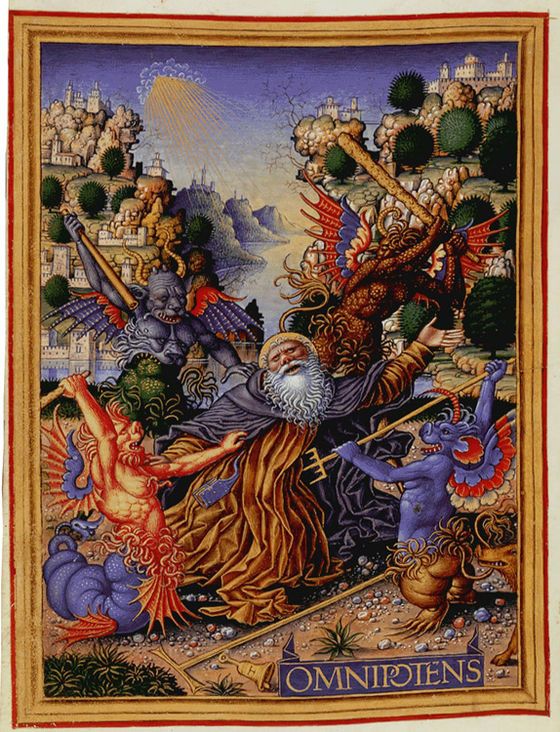
It was Bona's true misfortune to go up against one of the most capable and unscrupulous political operators of the Renaissance later in life: Ludovico Sforza, Galeazzo's brother. She won their initial skirmished and stopped him from seizing Milan after her husband's death. However, she would not be so lucky the second time they matched wits, years later.
Caterina never had a bad word to say about her step mother, and kept up a steady correspondence with her until her dying day, even after the older woman was forced to flee Milan and Caterina had assumed power of her own.
The stage is set to discuss Caterina Sforza's childhood, and we shall do so on the next blog!